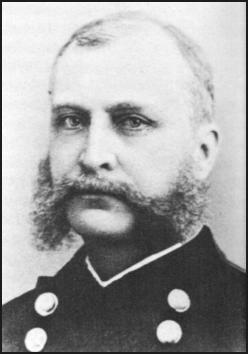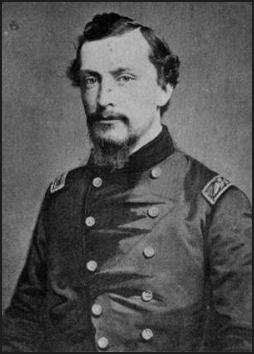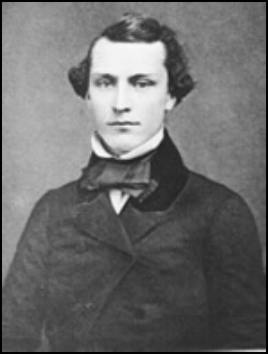Isaac J. Wistar facts for kids
Quick facts for kids
Isaac Jones Wistar
|
|
|---|---|

Isaac Jones Wistar
|
|
| Born | November 14, 1827 Philadelphia, Pennsylvania |
| Died | September 18, 1905 (aged 77) Claymont, Delaware |
| Place of burial |
Wistar Institute, Philadelphia, Pennsylvania
|
| Allegiance | United States of America Union |
| Service/ |
United States Army< Union Army |
| Years of service | 1861–1864 |
| Rank | |
| Battles/wars | American Civil War |
| Other work | Writer, penologist |
Isaac Jones Wistar (born November 14, 1827 – died September 18, 1905) was an American who had many different jobs. He was a lawyer, miner, farmer, soldier, and writer. During the American Civil War, he fought for the Union Army and was wounded twice. After the war, Wistar became well-known for his work in penology, which is the study of how prisons work and how to manage them. He also wrote books.
Contents
Isaac Wistar's Early Life and Many Jobs
Isaac J. Wistar was born in 1827 in Philadelphia, Pennsylvania. He went to Westtown Friends' School and then to Haverford College. Later, he earned a Doctor of Science degree from the University of Pennsylvania.
Wistar started his career as a lawyer in Philadelphia. In 1849, he moved to California to join the Gold Rush as a miner. For the next few years, until the American Civil War began in 1861, Wistar worked in many different fields. He was an animal trapper, a mountaineer, a farmer, and a lawyer. He also had experiences as an "Indian fighter," meaning he was involved in conflicts with Native Americans on the frontier.
Serving in the Civil War
When the American Civil War started in 1861, Isaac Wistar decided to support his home state and the Union cause. He gathered a group of men and was chosen as their captain. Wistar's company joined the 71st Pennsylvania Infantry regiment, which was first known as the California Regiment. This regiment was formed in New York.
On June 28, Wistar was promoted to lieutenant colonel. On July 1, the 71st regiment moved to Fortress Monroe on the Virginia Peninsula. Later, on July 22, Wistar and his regiment were sent to Washington, D.C.. They helped defend the capital until that fall.
Wistar took part in the Battle of Ball's Bluff on October 21, where the Union Army suffered a defeat. During this battle, he temporarily led the regiment and was seriously wounded. He was hit in his right elbow, his jaw, and his thigh.

After Colonel Edward D. Baker died at Ball's Bluff, Wistar became the commander of the 71st Pennsylvania. He was promoted to colonel on November 11, 1861. The 71st regiment was involved in the Peninsular Campaign in 1862. However, it's not clear if Wistar was present for all of it. During the Battle of Seven Pines and the Seven Days Battles, other officers led the regiment.
Wistar fought in the Battle of Antietam on September 17, 1862, where he was wounded again, this time in his left arm. His commander, Oliver O. Howard, noted Wistar's injuries. He said that Wistar's right arm was "nearly useless from a former wound," and now his left arm was also injured. On November 29, Wistar was promoted to brigadier general. He was then given command of a brigade in the VII Corps starting May 16, 1863.
From July 18, 1863, Wistar commanded the District of Yorktown in Virginia. In August, this area became a smaller part of the Department of Virginia and North Carolina. In April 1864, he briefly led a division in the XVIII Corps within the Army of the James.
On May 7, Wistar returned to leading a brigade and took part in the Bermuda Hundred Campaign. However, just 11 days later, he was removed from duty and replaced by Colonel Griffen Stedman. Some historians believe Wistar's performance during this campaign was not strong. Wistar officially resigned from the Union Army on September 15, 1864.
Life After the War
After the Civil War, Isaac Wistar went back to being a lawyer in Philadelphia. He also became a well-known expert in penology, which focuses on how prisons are run and how to improve them. He served as a vice president for the Pennsylvania Railroad Company, managing its coal and canal businesses.
In 1892, Wistar founded the Wistar Institute of Anatomy and Biology at the University of Pennsylvania. This institute is in Philadelphia. He also worked as an Inspector for the Pennsylvania State Penitentiary. Wistar was also the president of the Pennsylvania State Board of Charities, the American Philosophical Society, and the Academy of Natural Sciences in Philadelphia.
Wistar wrote several books, including his own life story (an autobiography) and writings about war and penology. He retired in 1903 and passed away two years later at his summer home in Claymont, Delaware. Mount Wistar in Greenland was named after him by explorer Robert Peary during his expedition from 1898 to 1902.
- Some of his books include
- Prison System of Pennsylvania (1900)
- Autobiography of Isaac Jones Wistar, 1827-1905 (1905)
- Half a Century in War and Peace (1914, published after he died)
Personal Life
Isaac Wistar married Sarah Toland (1838-1895) in 1863, but they did not have any children. He was a widower for the last ten years of his life. In 1905, he left most of his money to the Wistar Institute. His obituary in The New York Times mentioned that the money he set aside before his death provided about $30,000 each year for the institute. Instead of being buried next to his wife at Laurel Hill Cemetery, Wistar was buried at the Institute he founded.


